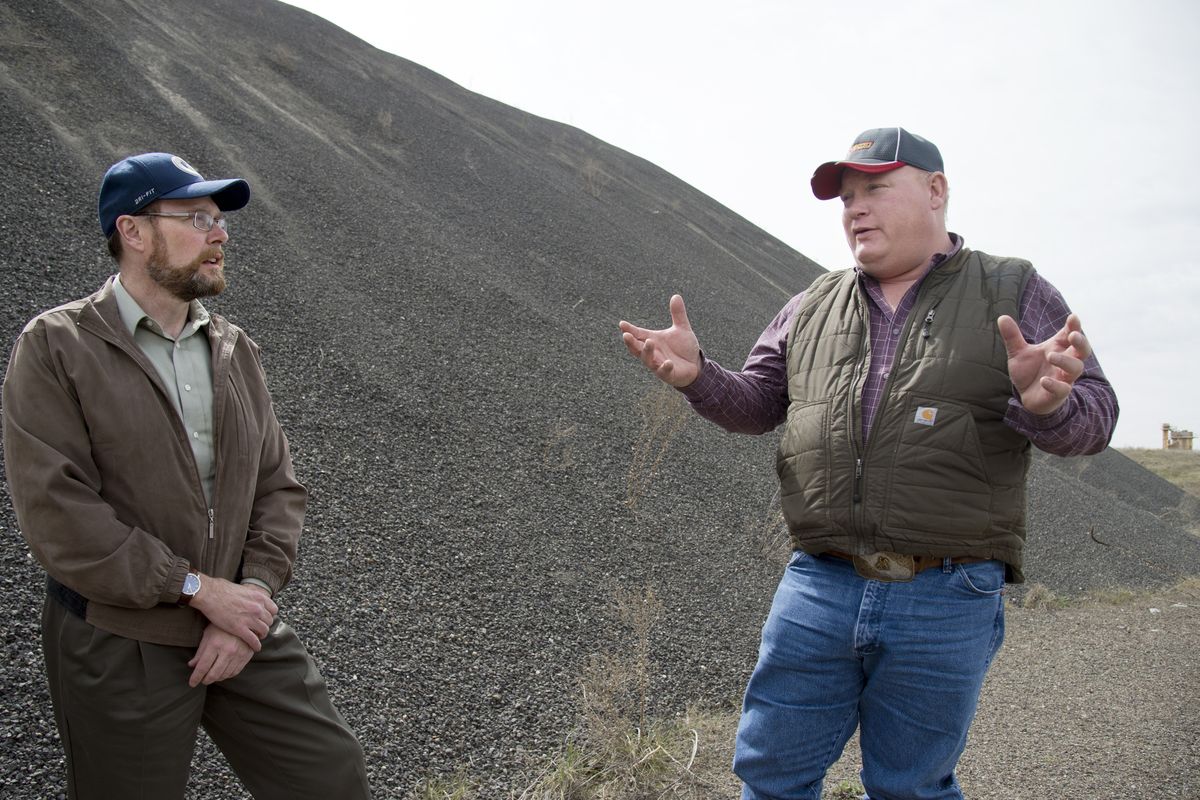Need for gravel pits emphasized

They may look like sandboxes built for Paul Bunyan, but the nearly 50 gravel pits and sand pits that dot Spokane County aren’t places for building castles or other child’s play.
“People don’t realize that 95 percent of asphalt is rock,” said Chad Coles, assistant county engineer, while walking through a Spokane County gravel pit across the street from Northern Quest Casino in Airway Heights. “We try as best we can to dig our own rock.”
Gravel pits are a hot topic in Spokane Valley because the city proposed a mining moratorium that would prohibit new pit construction. The effect would be to make it impossible for Spokane County to mine a site it recently acquired.
Spokane County owns and operates about a dozen gravel pits, some of which are 20 years or older, Coles said.
“We always wish we had more,” he added. “It’s a location thing. And there’s always demand for aggregate.”
Gravel is heavy, so it’s expensive to haul. Maintaining the more than 1,000 miles of unpaved roads in Spokane County is one reason why having gravel pits in different locations is ideal.
“If we have to haul the gravel more than 20 miles, then we start losing money on it,” said Jim Cotter, Spokane County District 3 road supervisor. “That’s why we need more than one gravel pit. The closer we are to the project the better.”
County road construction projects are done by contractors who usually also supply the gravel for the projects.

However, all gravel from county pits goes to county projects, except for a small quantity of aggregate that’s sold to smaller, nearby municipalities.
Coles, who jokingly said he has spent the majority of his road engineering career jumping out of the way of large machinery trying not to get run over, said the rock crushing is done by traveling crews.
“They are much like traveling bands of gypsies,” Coles said. “They show up with the crusher and the workers and they work 12-hour shifts, 24 hours a day, until they are done.”
In Airway Heights, the first step is blasting the hard basalt rock that’s being mined.
The huge rocks left behind by the blast are then run through the crusher, which chews them into big and medium rocks, and much smaller chips.
“The chips are used for chip seal on our roads,” Cotter said. “They have to be small and washed clean to work really well.”
Not all aggregate is created equal and a cost-efficient pit can only be located where gravel and rock is naturally present.
KC Klosterman, director of community relations for Central Pre-Mix, said that company produces a wider range of materials than the county does, so its site requirements are a little different from the county’s, but all sites are permitted and regulated in the same manner.
It’s the local municipality that determines whether mining is permitted in a certain location.
Then the state Department of Natural Resources issues a mining and reclamation permit, which demands the miner post a bond to ensure the site will be properly reclaimed.
Klosterman said that other state agencies, like the Department of Fish and Wildlife and the Department of Ecology, may have to issue site-specific permits depending on the location.
“We may also need air quality permits and stormwater permits,” Klosterman said. “And all the agencies involved conduct regular inspections of what we do.” In Spokane County, air quality permits are issued by Spokane Clean Air.
Gravel pits often have standing water in the bottom.
Standing water is not ideal, said Coles, and the county does everything it can to drain its pits.
Two gravel pits in Spokane Valley have so much standing water in the bottom that they are considered lakes and contained in the Spokane Valley Shoreline Master Plan, wrote Kitty Klitzke of Futurewise, an environmental land-use advocacy organization, in an email.
Environmental groups are concerned the pits may leak chemicals or actually dig into the aquifer.
“We don’t use any chemicals in the gravel pits other than we spray to keep the weeds down,” Coles said.
There are no general depth limits in Spokane County.
Road sweepers dump their loads at some of the county pits, and Coles said that material is tested for contamination.
“We check for many chemicals and make sure it’s safe before it’s buried,” Coles said.
Klitzke wrote that the best gravel mines are located upland where they can’t come into contact with the water table, and where distance allows protection from potential contamination.
“Of course the flood plain pits cannot do that,” Klitzke added. “If mining is allowed on the flood plain, which is not a good practice, then the bottoms of the pits should be no deeper than the depth of the river so if the river meanders into the pit the damage will be minimized.”
Coles said mining regulations have changed to make the sites easier to reclaim.
“We can no longer just dig down and have really steep sides,” he said. “They have to be sloped at a lower grade.”
Empty gravel pits located in agricultural areas are popular with farmers.
“They buy them and use them for farming or to store machinery,” Coles said.
Pits that are now located in urban areas often began on unincorporated lands, but neighborhoods grew around them.
“When we are done with those pits, they will go back to being residential neighborhood land,” said Coles.